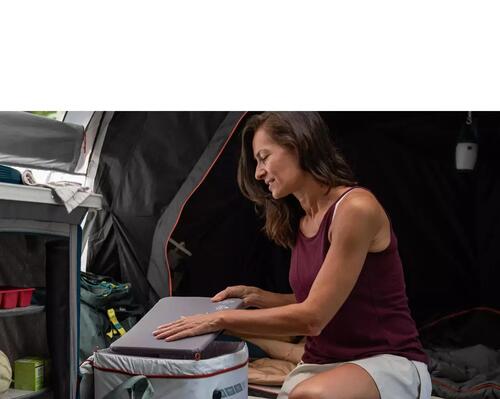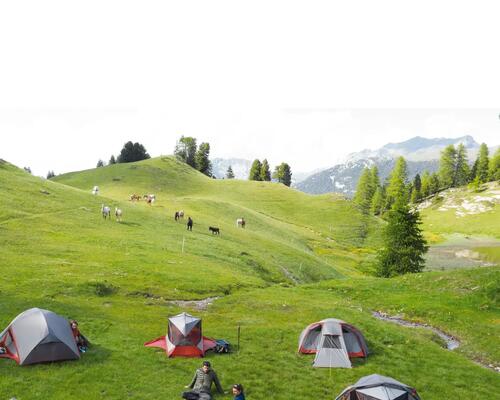How to store your polycotton tent ?how to prevent odours in your tent ?
As part of the tent is made of cotton, the canvas must be completely dry before storing it to prevent moud. This is extremely important because polycotton fabric is very sensitive to moisture. Especially since even small specks of mould are very good at growing. It will then be too difficult to remove them and bad odours may develop.
The golden tip is as follows: dry your tent well before storing it. Either at the end of your camping trip if the sun and wind are there, or once you are back home in your second house!
If you have space, the easiest thing to do is to pitch your tent in the open air, open all the doors and air it out well, just like spring cleaning. The sun and wind will be your best friends. If you are in a hurry, you can use a squeegee (like those used for swimming pools) to remove the water from your groundsheet.
Yes, that's if you have a big garden. We also have solutions if you don't have space outside to pitch your tent and dry it. Take your tent apart: double roof on one side, bedroom on the other. Then dry each item separately on a clothesline, a clothesline, a bathtub curtain rod, a balcony, etc. The guy ropes will be your allies to avoid a fall or a flight of canvas from the top of a balcony!
And last but not least, don't forget to dry the bottom of your tent and the cover too ;)
Once your tent is dry, and only then, you can fold it and store it in its cover. A word of advice: close the front door and all openings in the tent before packing it away. It will be even easier to unfold.
Store your tent in a dry place at room temperature. If you can place it high up, it's even better (in case small rodents are curious to see what is hidden in the cover).
By following all of these tips, you will ensure that you avoid any damp odours that may enter your tent.









